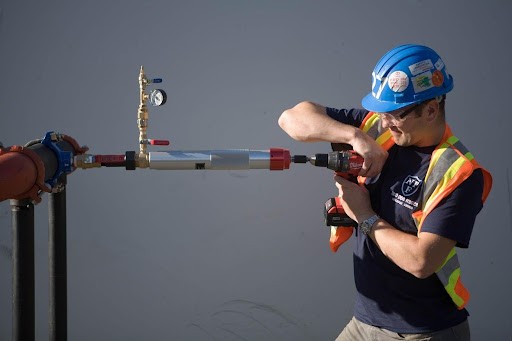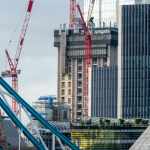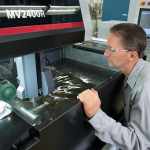The process of installing connections to pressurized Hot Tapping Pipeline while they are still operational is the basic definition of ‘hot tapping’, or sometimes called ‘pressure tapping’. This is mainly done by cutting or drilling. It is the technique whereby additional pipes are added to the existing system without stopping any of the services or removing a tank.
The main reason why many industries opt for Hot Tapping Pipeline method is that it is a cost-effective and safe way to ensure that business is as usual, and without disrupting the operations. It keeps potentially dangerous situations at bay, such as gas leaks or environmental damage through air pollution via the release of greenhouse gases for instance methane.
Sometimes in some industries that carry various oils, gases, and liquids in their pipelines, Hot Tapping Pipeline method helps to repair vulnerabilities such as corrosion or damage and also to add branches to existing systems or modify them according to various requirements.
If this method is not implemented early there are huge risks of leakage and can make matters worse without knowing. There is also the risk of ‘burn-through’ caused by an unstable decomposition of the product flowing through the pipes and when interacted with other risky components can result in violent reactions such as high pressure, blowing up, and fires or waste spills.
During the process of hot tapping, the temperatures inside the pipes are controlled to avoid the build-up of pressure and precautions are taken to keep things ‘calm’ and avoid temperatures exceeding the normal numbers.
A Basic Idea on the Hot Tap Method
There are three steps within the operation that are typically taken into consideration once a thorough assessment is completed on the site:
- Firstly, once the assembly is tested for its pressure capabilities, a ‘saddle’, nozzle or welded thread is installed, onto which the machine is mounted.
- Secondly, the main valve is opened and the portions that are cut, are retained by latches, this contains the pressure inside the machine.
- Lastly, the coupon or cutter is withdrawn and the bit that’s been cut off is retained while the valve is closed shut. Any liquids are then drained and the line stop equipment is inserted.
As an ideal solution for line-topping, it is easy to add a plugin in the cut or hole created by the procedure. However, there are some instances where this type of welding is prohibited. A few situations include:
- In cases where the line is carrying various vapors of gases of the flammable kind and are at risk of combustion once the heat is applied to the structure.
- In cases where there is the risk of decomposition or an unfavorable reaction and could lead to an increase in the pressure at a dangerously high level. It could lead to an explosion due to the combinations of pressure, temperature and concentration of substances such as unsaturated hydrocarbons like ethylene or acetylene.
- Atmospheres that are oxygen-enriched and wherein the presence of hydrocarbons can risk the substances inside the pipe or equipment.
- Also, the air has hydrocarbons that can combine with compressed air.
- Mixtures of various types of gases which, when mixed with hydrogen, and exceed the barometric pressure of 700 kPa (kilogram-force per every square centimeter) reading, unless evidence shows that hot tapping is a safe solution.

Hot Tapping is a Careful Solution: The Risks Associated
Because the risk of violent reactions is paramount when welding any vessel or pipeline, hydrogen can crack through the walls and increase the heat flowing through the weld region, this may lead to the formation of solid microstructures. To remedy this, sometimes a ‘temper bead’ is used to control the process from happening.
This is a technique of welding used for mainly large structures where it may be difficult to perform any other relevant action: https://weldfabtechtimes.com/article/__trashed-2/ however safety procedures are imperative when performing this operation. There are a few ways to ensure this, and one of them is via a computer modelling technique. It uses flow loops and the main objective is to control the cooling and heat flow capacities of the pipes through this modulated approach.
Due to this technique also being performed on structures that run flammable gases and materials, it is advisable to use safe operations and a few ways of doing this is to restrict the parameters where the welding will take place or the ‘hot tapping’. This keeps the inside of the pipeline pressure stable and low enough to avoid any type of risks of ignition or combustion.
Companies that offer these hot tapping services will usually do a risk assessment on the structures and advise on the best and least risky way forward. A live vessel or in-service welding need to abide by the national standards.
For example, on code of practice falls under the BS 6990 which focuses on vessels that contain hazardous liquids and are under pressure. It also includes those with walls of a thickness of 5mm and not less. It provides the right guide for hot tapping that services need to keep in mind at all times. This is a highly specialized welding technique and is used as a substitute or replacement for post welding heat treatments.
Instances Where Hot Tapping May Not Be a Solution
A list of some of the gases that are considered hazardous when this process is in context include, but are not limited to:
- Sulphuric acid
- Caustic soda
- Oxygen
- Chlorine
- Ethylene oxide
- Butadiene
- Hydrofluoric acid
- High-pressure steam
- Acetonitrile
- Propene oxide
- Hydrogen
- Ethylene
- Fat/lean DEA/MEA Acetylene
- Hydraulic Oil
- Propene
- Hydrogen sulphide
- Compressed air at a pressure above 3000 kPa
When looking for the right experts to fit the bill, you should always make sure that they follow the right procedures. This can be determined by the pressure or hot tapping contractor or company explaining the entirety of the technique to you, as well as you asking them to clarify any confusions or queries necessary.
When adding branch connections to existing structures such as these lines, it is imperative that the services need to avoid disrupting the organization’s services.













